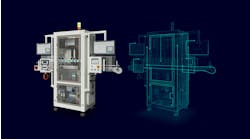Who wants to get to the future faster? In May, almost 4,000 engineers and scientists gathered in Austin, Texas, for National Instruments’ annual spotlight on its community of technology lovers and wunderkinds. The displays of innovations and implementations never cease to amaze.
This year’s theme focused on reducing time to market and solving problems more speedily through open-platform collaboration and increased networking capabilities.
“Our platform has always been open, facilitating a large partner ecosystem,” explained Alex Davern, president and CEO at National Instruments (NI). “We’re committed to continuous innovation. We invest 18% of revenue back into R&D, and we have more than 300,000 active users of NI software.”
A company willing to reinvest almost one-fifth of its sales into development of new technology is a company that sees what’s ahead. “The future is coming faster and faster,” said Scott Rust, senior vice president, global R&D, at NI. “We have invested in innovations and created a platform and ecosystem that will be there to meet future needs.” After taking a stroll down memory lane and revisiting the launches of LabView, PXI, TestStand, LabView FPGA and CompactRIO, Rust reminded attendees that it’s the user community that makes NI’s tools accelerate.
“We’re already past the point where a single person can keep up with the technology offerings,” said Rust. “We’ve heavily invested in innovation.”
Eric Starkloff, executive vice president, global sales and marketing, at NI, demonstrated the benefits of ecosystem collaboration by comparing the design, manufacture, operation and maintenance of an aircraft to that of a printer. The aircraft requires multiple complex systems of critical technologies to work together harmoniously, and it’s done with remarkably flawless consistency. And then consider your printer, he said, a closed system that’s often crippled by a paper jam.
“Our engineered world is a technology ecosystem based on software,” explained Starkloff. “This community is at the leading edge of technology. And from Day 1, NI has had a systems mentality. We’ve iterated on our platform year after year after year. Our engineered world has things that improve our lives and things that distract from them.”
The brilliance of the future will be defined by the choices made by engineers and scientists. What will you work on? The next installment of emojis? Or ways to use artificial intelligence to cure diseases? I can’t wait to find out.






